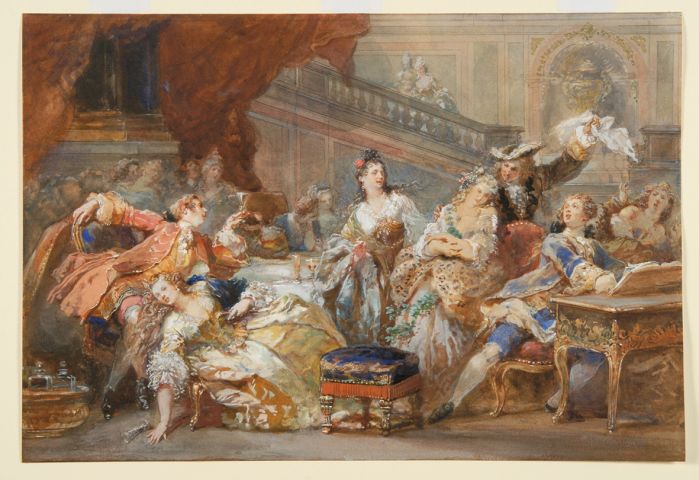Theatres Of Life: Drawings from the Rothschild Collection - Wallace Collection, London

Your support helps us to tell the story
From reproductive rights to climate change to Big Tech, The Independent is on the ground when the story is developing. Whether it's investigating the financials of Elon Musk's pro-Trump PAC or producing our latest documentary, 'The A Word', which shines a light on the American women fighting for reproductive rights, we know how important it is to parse out the facts from the messaging.
At such a critical moment in US history, we need reporters on the ground. Your donation allows us to keep sending journalists to speak to both sides of the story.
The Independent is trusted by Americans across the entire political spectrum. And unlike many other quality news outlets, we choose not to lock Americans out of our reporting and analysis with paywalls. We believe quality journalism should be available to everyone, paid for by those who can afford it.
Your support makes all the difference.Midway through the 18th century, the sometimes great, sometimes not so great Venetian painter Canaletto spent almost 10 years in England, in London for the most part. The house where he lived is still there, in Beak Street, Soho. On a few occasions, he popped out into the English countryside to paint the homes of his aristocratic patrons.
He also indulged what might have been a sense of fun by painting what in art-historical jargon are known as capriccios, fantastic scenes in which unlikely buildings turn up in the English landscape, as if descended from outer space.
One such building, though not one known to Canaletto because it post dated him, is Waddesdon Manor, the house commissioned by Edmond de Rothschild in the 19th century to househimself, his family and his art collections. It overlooks Aylesbury Vale, and the very sight of it (it’s still there, lovingly tended by the National Trust) makes you blink in disbelief. What is a Renaissance chateau in the French style doing here? It is a piece of pure fantasy, theatre, spectacle.
And this show of 18th century drawings from that manor house, many on public display for the first time, is all of a piece with the house from which they have been borrowed. They too are about display, theatre, andthe fact that human beings so often love to see themselves raised up on plinths as if they were not so much flesh and blood as delicious art objects of a particularly fragile and seductively evanescent kind.
Given this, it is surprising that most of the drawings in this show are on a modest scale. You would think they would want to aggrandise themselves. But they are often unassuming. In part, this is because many of these drawings would have been preparations for something bigger. What is more, they were designed to be of service to a house that, though of grand and fantastic pretensions, included unusualspaces, some small and awkwardly shaped.
These drawings, French for the most part, hold up a mirror to the times, and the times were all about strut and posture and modishness, whether it be that elegant Dutch lady from Amsterdam we see skating along a canal in a drawing by Bernard Picart, or the various groups of people we see gesticulating in a box at the theatre in one of a suite of extravagantly posed drawings by Jean-Michel Moreau the Younger.
Best of all in this showare the drawings by Nicolas Lancret, dated to about 1730. There is a wonderful drawing of a young man dancing, seen from the back.
Look at the way his clothes seem to mould and set off the contours of his graceful body as he crooks his forefinger and raises his finely pointed left foot. How sweet life seems when you are dressed this way. And how the Rothschilds would have been doubly encouraged to enjoy their opulence in the timeless company of such gay artifice.
To 27 January (020-7563 9500)
Join our commenting forum
Join thought-provoking conversations, follow other Independent readers and see their replies
Comments